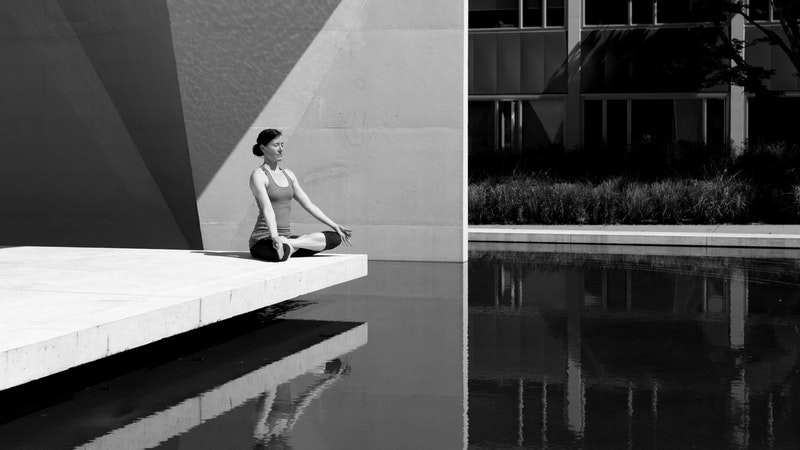Anchor in the Body
Episode #3 of the course How to heal yourself from phobia step by step by Gracelynn Lau, MWS
Now that you’ve re-created a more positive relationship with fear and set specific goals for recovery, we’ll talk about how to anchor in your body during the panic moment.
Each time we escape from the phobic situation, we reinforce the fear. The key to recovery is to stay in it for as long as we can manage, until the fear is reduced. How can you train your body to fully experience extreme stress for longer than it wants to? We can practice the following:
Diaphragmatic breathing. When the body is in a phobic response, we either forget to breathe or breathe from the chest rather than the abdomen. Shallow and rapid breathing further stimulates the sympathetic nervous system (fight or flight). As the concentration of oxygen in your brain is reduced, the body attempts to gain oxygen through intense breathing, which may result in hyperventilation and make you more anxious. Slow, long breathing from the diaphragm, on the other hand, activates the parasympathetic nervous system, which calms the fight-or-flight system.
Don’t mistaken taking “deep breaths” with diaphragmatic breathing. Breathing deeply from the chest may increase hyperventilation, causing dizziness and sense of suffocation. To practice diaphragmatic breathing, gently place your hand on your abdomen. Feel your belly expand with a long, slow inhale; exhale and feel the belly soften. The more often you breathe this way, the easier you can activate the relaxation response.
Progressive muscle relaxation. “An anxious mind cannot exist in a relaxed body,” said Edmund Jacobson, who developed this fundamental relaxation technique in 1938. In this practice, you tense and release each of the major muscle groups in sequence. Starting from the forehead, you tense the area for four to eight seconds while you’re fully aware of the tension, then you release the muscle and bring your full awareness to the sensation of relaxation. Practice for ten to 15 minutes until you go through each muscle group from head to toe.
Create a stable rhythm. A recent study by Barry Quinn, PhD, demonstrates that rhythmic drumming can guide the brain to a focused, concentrated state of beta waves, which can double alpha brain waves. A steady rhythm synchronizes the two cerebral hemispheres in the brain; it also integrates the nonverbal information from the limbic system into the frontal cortex.
To create a steady rhythm practice, you can join a drum group or start as simply as chanting a mantra in meditation. One example is Kirtan Kriya in Kundalini yoga: You chant “Sa,” “Ta,” “Na,” and “Ma” while touching your thumb alternately to the index, middle, ring, and pinky fingers over and over for eleven minutes. You can also count your breaths or steps with “1, 2, 3, 4” and then “4, 3, 2, 1” in a steady rhythm to establish an inner tempo.
Practice Zhan Zhuang. Zhan Zhuang is an ancient Chinese standing meditation. It helps rebalance your energy from your head to the center of the body: the lower Dantian in Chinese or Hara in Japanese. This center is located below the navel, down the width of three fingers.
To practice Zhan Zhuang, you first stand with feet pointed ahead, parallel to each other at shoulder width. Then you roll your hips slightly forward and your knees slightly bent, as if you are sitting on the edge of a high stool. Let your arms rest comfortably at your sides and palms facing toward hips. Tug your chin inward; place your tongue gently on the palate. Keep your eyes slightly open with a soft gaze and imagine a string from the crown of your head reaching into the sky. Stand in this posture, breathe steadily, and relax (here is a great drawing of proper standing posture from Brisbane Chen Tai Chi).
Like any other strength trainings and muscle-building exercises, all these techniques require daily practice. Once your body is familiar with this skill, you can develop the skill by practicing in a relatively less phobic situation. Then it can be used more effectively as you gradually increase the challenge.
Tomorrow, we will go one step further: We will design an action plan to put you in fear-provoking situations in a structured, prepared way.
Take care,
Gracelynn
Recommended reading
Meditative Movement for Depression and Anxiety
Recommended book
The Confidence Gap: A Guide to Overcoming Fear and Self-Doubt by Russ Harris
Share with friends

